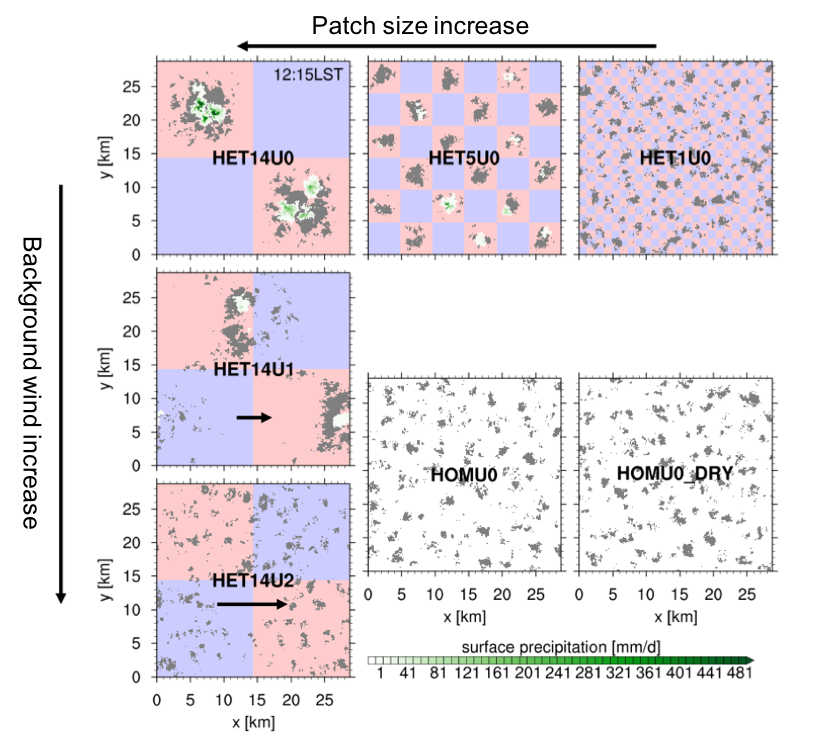The effect of land heterogeneity and background wind on shallow-to-deeper convection transition
Submitter
Zhang, Yunyan — Lawrence Livermore National Laboratory
Area of research
Cloud Processes
Journal Reference
Science
Using idealized large-eddy simulations that can reveal detailed cloud processes from a few tens of meters to a few tens of kilometers, U.S. Department of Energy scientists investigated two environmental factors that may change the fate of fair-weather shallow cumulus clouds--that is, whether they stay shallow or transition into deeper clouds that rain heavily. They also provide physical explanations of the influential mechanisms involved. The two environmental factors they investigated are: 1) the spatial scale of the variation of the land surface in heating and moistening of the overlying atmosphere and 2) the magnitude of the atmospheric horizontal wind speed.
Impact
This study advances our understanding of how land surface heterogeneity and atmospheric winds are coupled together to influence the formation of clouds and precipitation. This study may draw attention from both modeling and observational communities to the need to fully understand the details of land-boundary layer-cloud interaction and represent these sub-grid scale processes in large-scale models.
Summary
Land surfaces in nature are highly heterogeneous, with spatially varying surface properties such as soil moisture and vegetation cover. Land heterogeneity induces non-uniform surface heating, which is expected to influence the near-surface atmospheric structure as well as the formation of land surface-induced clouds. This study explores the role of heterogeneity length scale and background wind speed on the formation of organized, near-surface atmospheric circulation and the transition of what initially forms as small, puffy clouds into tall and precipitating clouds. Idealized large-eddy simulations are used with prescribed heterogeneous surface heat fluxes where wet and dry patches alternate. Our results suggest that the impact of land heterogeneity remains strong when the heterogeneity is larger than 5 km and the ambient wind speed is less than 1.5 m/s. The cases that satisfy those conditions favor the development of moisture pools underneath the clouds that later transition into precipitating convection over dry patches in the afternoon. This study proposes a necessary criterion to induce secondary circulation that favors the shallow-to-deeper convection transition for a given heterogeneity length scale and wind speed.


